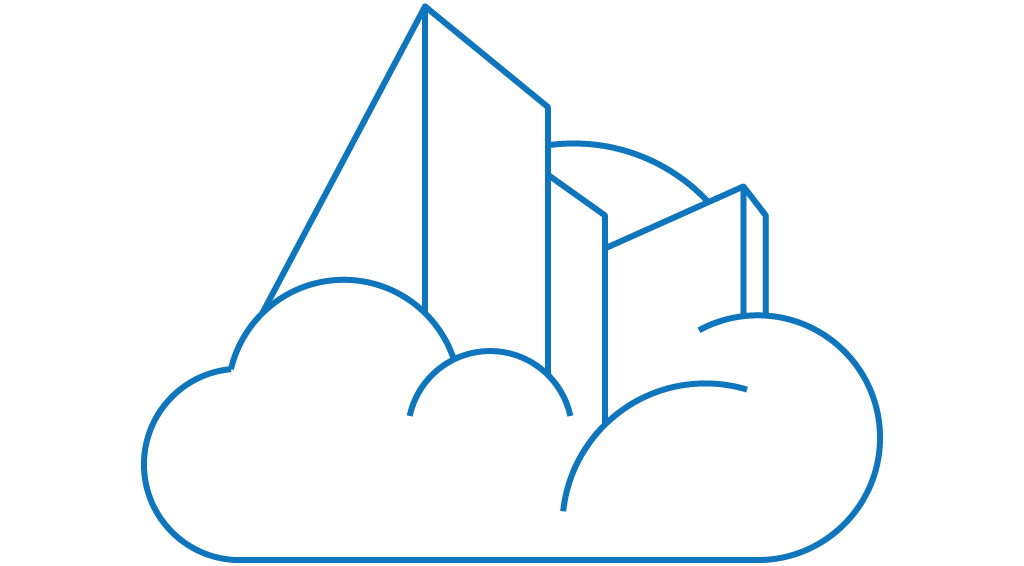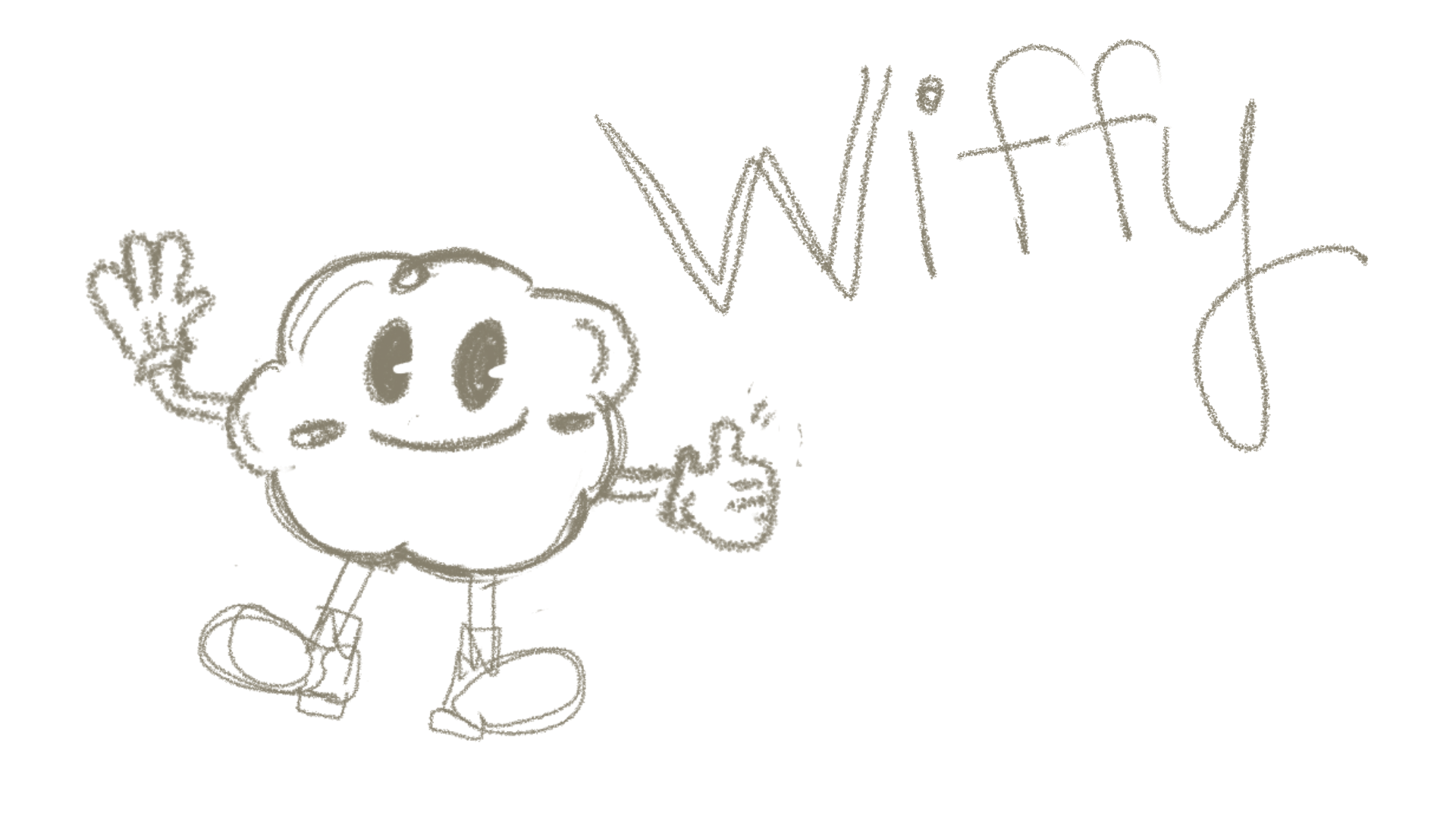
Week 11: Feedback Implementation
Communication Changes
Way back at the beginning of the project our plan was to have the project playable through a browser using WebGL to set it up. Because of this decision, and our need to have voice chat features available, we had been using WebRTC to provide this communication as it was the only provider of voice chat that was compatible with WebGL.
However we have been planning on having a stand-alone build downloaded for the festival instead of browser support for a number of weeks now. Because of this, we’ve decided to shift our voice chat to using Photon Voice, because it is far more stable and has far less hoops to jump through to activate the microphone than WebRTC. Not only is the connection typically stronger, it also activates more reliably. We’re currently using a free version to try it out, but it only supports up to 30 concurrent users. We’re requesting a higher level version that will be able to support 1000 concurrent users for the festival.
UI Updates
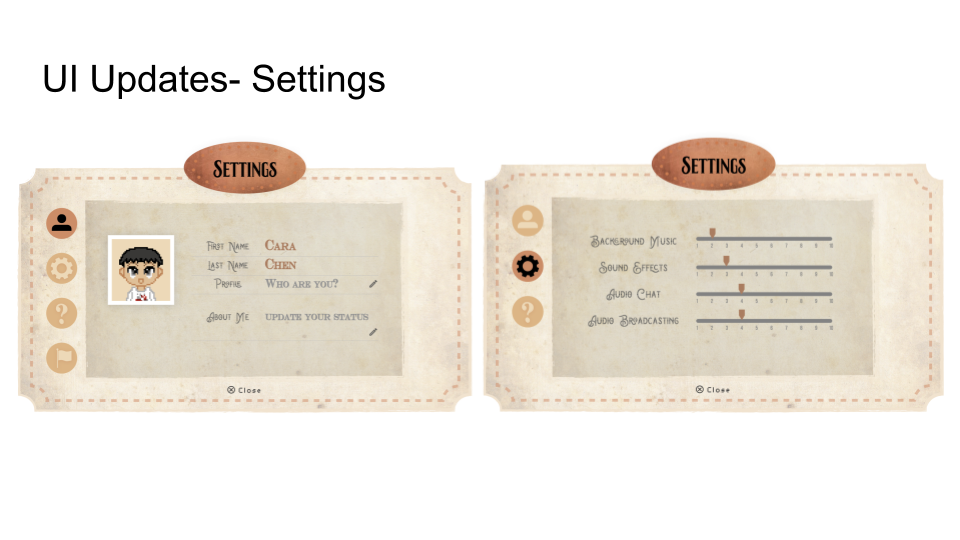
After last week’s playtest, we have designed and implemented some changes to the settings menu, allowing users to alter the volume of the music, SFX, chat rooms, and broadcasting. This way guests will be able to customize their settings in real time to make sure that they can hear everything they would like to–or not hear for that matter.
Also within the settings menu is a space for them to add personal information describing themselves. This will act similar to the name tags that get handed out at the festival normally. They will be able to put in a descriptor of their job title or project affiliation and ‘About me’. When you click on another avatar within the space a profile pop up will appear showing their information around their name.
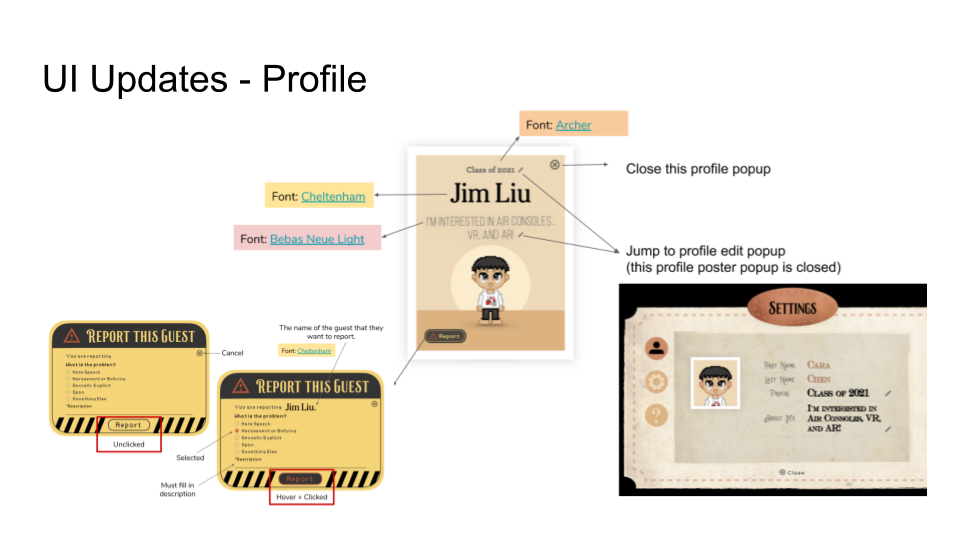
On this same pop up is a report button in the bottom left corner. This report button is how we will be doing live moderation of the guests. If one guest starts to act out, breaking the term of access that they agreed to at the start of the festival, another guest can click on their profile, open the report menu, and register a report for hate speech, sexually explicit speech, spam, or other. Once we receive these reports, we can revoke this individual’s chat abilities to prevent them from continuing the behavior.
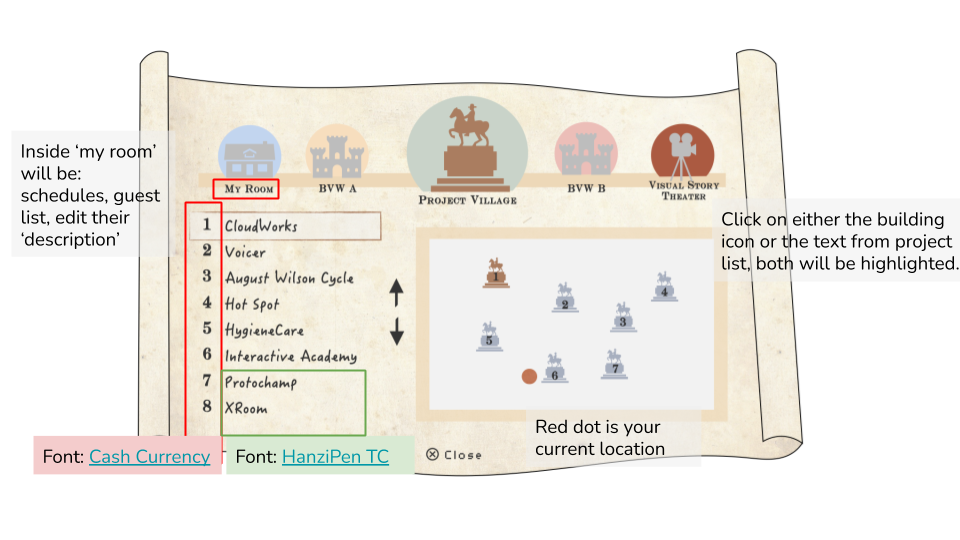
The map is also now fully interactive, allowing guests to click on either the name of a project from the list, or the icon of a project on the map to highlight it. Their position in the world will be updated in real time with a red dot. Each area will have their own maps and within the personal room there will be a schedule of events, guest list, and space to update their profile information.
Mechanical Turk Playtest
On Thursday of this week we ran a small scale Mechanical Turk playtest with ten users to try it out before committing to a larger one to stress test later. The testers were asked to log in simultaneously and interact with the world. However we ran into an issue with this format, because after trying it out and looking at their responses to the test afterwards, we found that the majority of them did not actually go through the process of downloading and entering the world. So we’re in a bit of a pickle here about how best to stress test it. We’re currently looking at options to only pay for those users who we can confirm downloaded and entered the world and went through our prompts, but until then MTurk is looking less than trustworthy to rely on for simultaneous stress testing.
Onboarding Animation
After we spoke with Dave this week about his participation in the livestream representing BVW, we asked about using Quasi as the mascot of the festival. We decided that it would be better to create our own character to represent the ETC and our project. So we hit the drawing board to plan out a character inspired by our project.

For these purposes we’re happy to introduce Wiffi! Wiffi pulls their name from Wi-Fi and is a cloud, both symbolizing the remote presentation format for this year’s festival. Wiffi;s design is inspired by the old ‘rubber-hose’ style of animation that we’ve pulled inspiration from for the rest of our project.
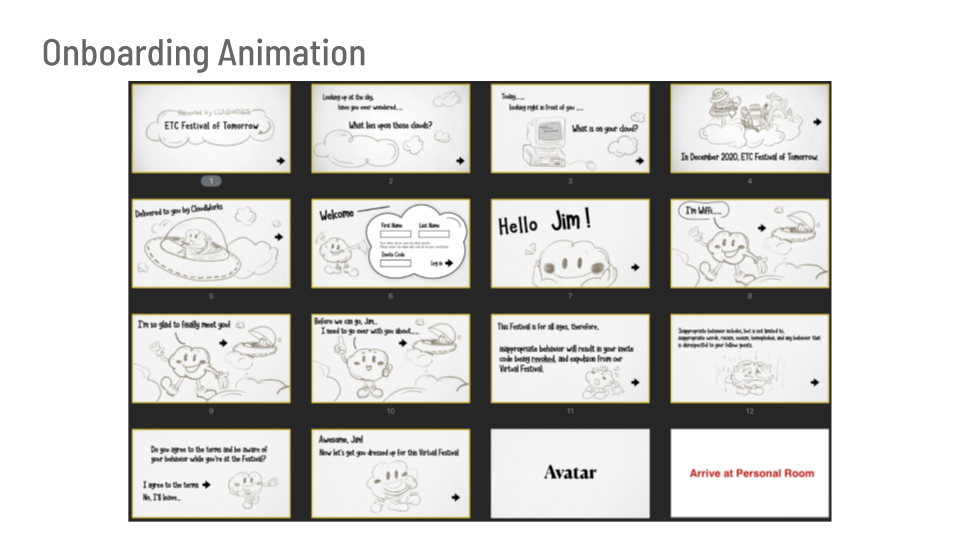
We put together some storyboards using Wiffi and implemented them to onboard guests, asking them to log in and explaining how they should behave in the space.
BVW Committee Updates
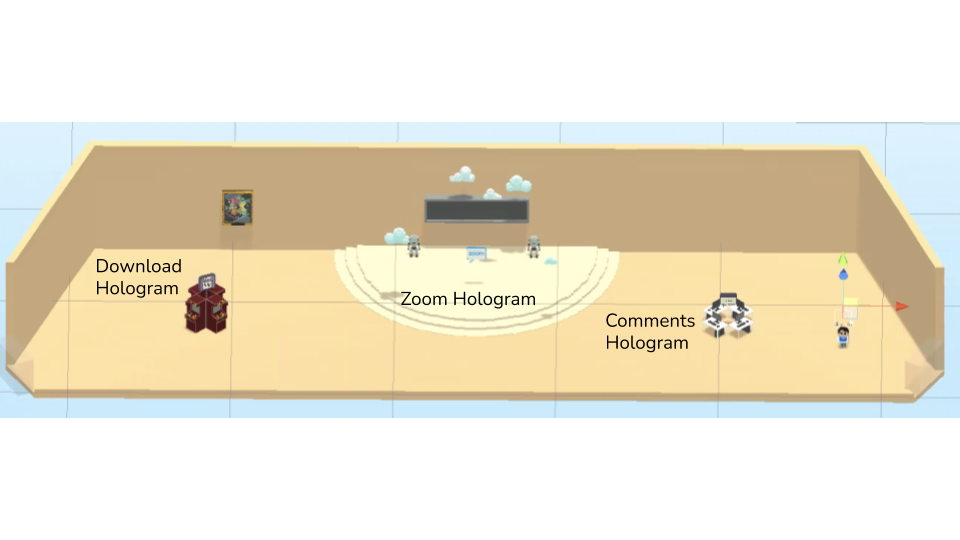
This week from the BVW committees we’ve received most of the environmental assets to be added to the BVW area, including the overhead buttons for downloading projects and entering Zoom calls.
From the sound committee we’ve also received the playlists for the personal room and avatar customization screen.
The website committee has started brainstorming and storyboarding an animation to play at the frontpage of the website to welcome guests in and explain the new format of the festival.
Environment Updates
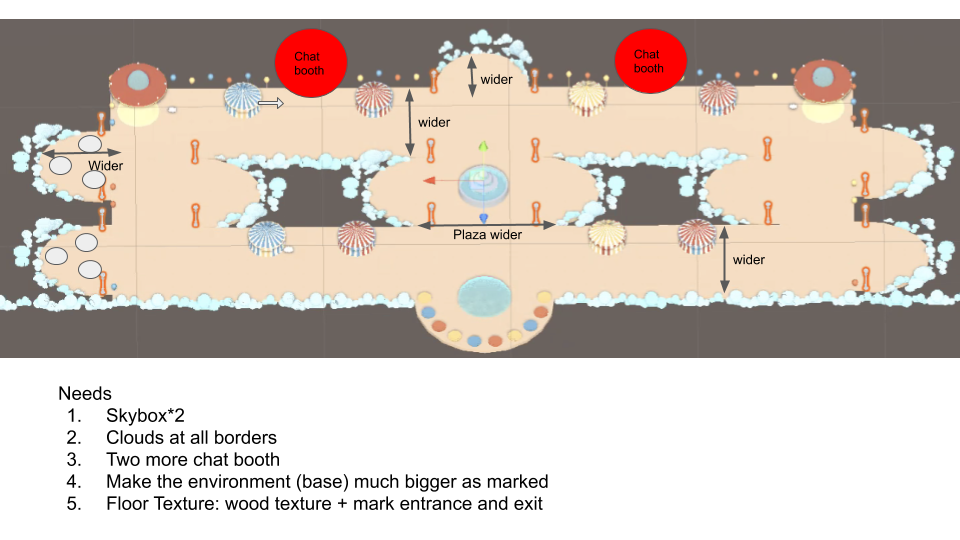
For the BVW area, we have cut down on the number of rooms within the space to help lessen the amount of walking necessary by guests. We’ve also added more space between the BVW project rooms for ‘landmark’ features–pulled from the art committee–to help guests to navigate the space and know where they are. This will also help to lessen the sense of walking on a treadmill that we’ve heard from some playtesters.
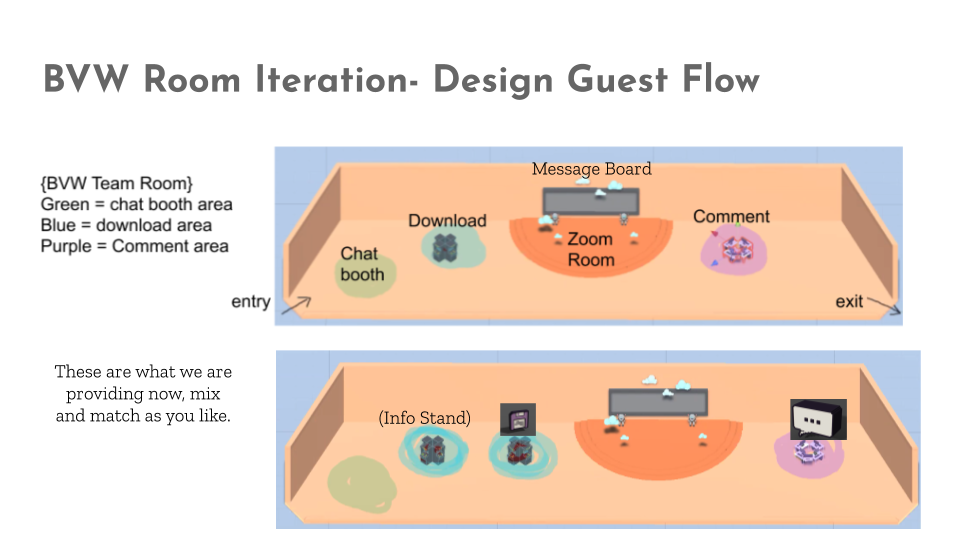
Within the BVW rooms, we’ve made them wider to add more space for guests and more decorations from the teams. We’ve solidified the features that will be available for each team as:
- Chat booth
- Downloading station
- Zoom link
- Comment station
- Instruction screen
The typical flow for guests will be from left to right. There will be a chat booth near the entrance followed by the download space, represented by a four-sided arcade machine, kept constant in each room. At the center along the back wall will be the trigger to launch the Zoom room to meet with the team. This space can be customized by the team to match their art assets. As they walk to the right to leave, there will be a space that they can leave comments for the team after they play, currently represented by a computer. Once they exit the room on the right, they will be put out on the right side of the tent in the global BVW area.
One-on-One Playtests
At the end of this week we sent out individual invitations to faculty and alumni that we wanted specific input from on certain parts of our project. We’d talked with many of these people throughout our process so we wanted to get some input on our iteration.
We asked each guest to go through the onboarding process and try out each of the features that we currently have implemented including:
- Avatar creation
- Avatar editing
- Project downloading
- Project launching
- Text chatting
- Voice chatting
- Broadcast listening
- Settings changing
- Map navigation
- Profile customization
- Reporting
- Image viewing
- Video viewing
From these playtests we are looking to implement an ability to copy another guests profile information, as a way to simulate the exchange of business cards. We also saw that there was some confusion around when other characters were taking actions, so we are looking to amend this. For example, it was occasionally confusing when trying to determine which avatar was currently speaking, or if another avatar was currently not active within the world, playing a BVW world. We also saw a lot of confusion around our avatar customization UI, so we are looking at ways to streamline this menu to limit the number of things on screen to keep attention focused on the interactive areas. There was also some difficulty for our playtesters around Zoom windows and BVW worlds launching behind the fullscreen festival .exe window, making it difficult to alternate between these different windows.
We also got some feedback on our decision to limit the project to a Windows build. This decision was made early on because some of our core features, like downloading and launching BVW projects would not be possible on a Mac. However, we recognize that there are many individuals who only have access to a Mac, so we are now looking at options to support these users. The timeline for this is entirely dependent on our ability to complete the Windows version in time because this is our absolute priority. Supporting Mac users would be fantastic and we will do our best to be able to. We’ve requested a Mac from the ETC to try testing and developing on it, but we won’t be able to dedicate time to it until after Thanksgiving, if at all.
Next Week
Our big push for next week is another playtest we are planning for on Sunday, Nov. 22. We are planning for this playtest for be synchronous for as many testers as possible to simulate the festival experience as best as we can. For this test we’ll be looking to have both the Project Park and the Visual Storytelling Theater environments implemented to have our testers navigate from one area to another and experience each different type of project available at the festival.
